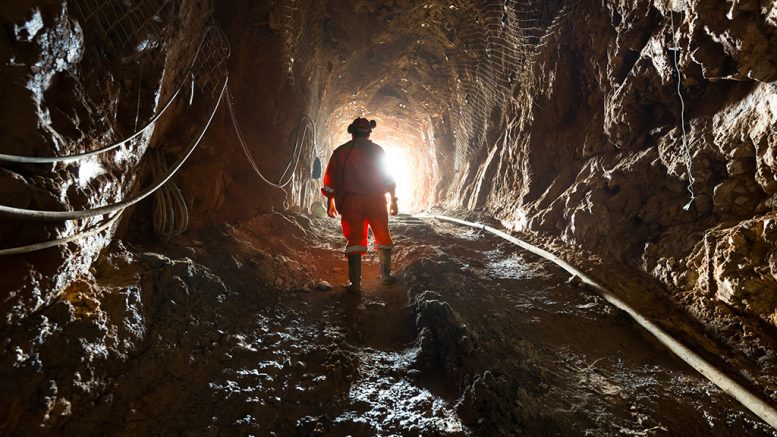Memorable corporate and political anniversaries are front of mind at the moment, as is an historic expedition with a valuable lesson for risk assessors everywhere.
Newmont recently celebrated its 100th anniversary of incorporation. Colonel William Thompson had founded Newmont Company (an amalgamation of New York and Montana) in 1916 to hold his investments, and incorporated the enterprise five years later.
The first shares in Newmont were traded publicly in 1925 (and ‘Mining’ was added to the name). Since then the company has done rather well. Newmont’s 10th CEO, Tom Palmer, noted that it now has 14,000 employees and a market capitalisation of more than US$51 billion.
The day after Newmont’s incorporation, and on the other side of the Atlantic, Northern Ireland was separated politically from the rest of the island of Ireland on May 3, 1921.
The Irish state had come into being in 1916 as the 32-county Irish Republic, but the majority of the population in the six counties of the historic northern province of Ulster wanted to remain within the United Kingdom. (This term dates back to 1801 following an Act of Union between Ireland and Great Britain, the latter comprising England, Scotland and Wales.) The remaining 26 counties became the Irish Free State in 1922, and the Republic of Ireland in 1937.
The unionists of Northern Ireland are generally the descendants of Protestant colonists from Great Britain who had replaced the native Catholic, Irish-speaking, Gaels.
England had conquered Ireland in the 16th century, and Ulster was the province that offered the greatest resistance. Following the Battle of Kinsale, many of the Ulster lords fled to mainland Europe and their confiscated lands were settled by English-speaking Protestants. The defeat of further Irish rebellions in the second half of the 17th century was followed by a migration of Scots Protestants to Ulster during the Scottish famine of the 1690s.
Another recent celebration in Europe marked the 500th anniversary of the death of Ferdinand Magellan. The Portuguese aristocrat has gone down in history as the first person to circumnavigate the planet, even though he died in the middle of the journey.
Magellan had left Spain in September 1519 with five vessels, manned by a multi-national, 270-strong crew. In November 1520, after a gruelling journey (including putting down a mutiny and wrecking a ship), Magellan discovered a route around the southern tip of South America to the ‘Mare Pacificum’ (Peaceful Sea), albeit with the loss of another ship.
On April 27, 1521, Magellan was speared while leading a pointless invasion of the island of Mactan in the Philippines (his body was never recovered). He had already become, however, the first European to lead a voyage into the Pacific Ocean, and one of his ships (captained by Juan Sebastián Elcano) eventually arrived back in Sanlúcar (three years after it had departed). The other four ships had been lost, and only 18 of the original crew survived.
Magellan is famous but his expedition is a useful demonstration of Murphy’s Law, namely that if things can go wrong, they will go wrong.
Murphy is the most common surname in Ireland (derived from the Gaelic O’Murchadha, which means ‘descendant of sea warrior’), but this well-known ‘law’ was coined by an American engineer in the U.S. Air Force, Edward Murphy, shortly after WWII.
Mining has much to learn from Magellan and Murphy; when planning anything, assume if something can go wrong, it will, and usually at the most inopportune time. With regard to risk assessment, if several things can go wrong, it will be the one that you would least like to happen.
Murphy’s Law is particularly valuable for studies into whether an ore reserve can be economically mined.
Some 21 months ago (mid-August 2019), McKinsey published a report on ‘Optimizing mining feasibility studies.’ The five authors noted: “With mining and metals projects becoming increasingly complex, more rigorous feasibility studies help prevent cost and schedule overruns, and maximize value.”
The report concluded: “Several common issues tend to erode value in mining projects, ranging from inadequate design to insufficient supervision. But one issue is persistently under-addressed: a lack of rigour at the feasibility-study stage.”
McKinsey said, “Many mining executives still rely on the same feasibility-study processes they did years ago, when resources were more accessible and projects less risky to plan and execute.” In a damning statement, the report concluded, “It is clear that the methodology of years past simply won’t suffice; when we studied the financial statements of more than 40 recent mining and metals projects, only one-fifth of them delivered the financial returns predicted at the feasibility stage.”
McKinsey identified four main shortcomings. First, the industry “does not widely use standard criteria for what constitutes a feasibility study with sufficient maturity to ensure a narrow estimate band and predictable outcomes”. Second, feasibility studies “often suffer at the hands of sub-par management practices, and owners may impose artificial schedule constraints.”
Third, McKinsey found that “many feasibility studies continue to rely on the current state of technology rather than account for anticipated technology advances, such as autonomous vehicles and advanced analytics.” Fourth, the typical contracting environment at the feasibility-study stage “rarely incentivizes EPCM contractors to maximize value for the owner and to find creative solutions.”
McKinsey could have added a fifth shortcoming in feasibility studies, too few mining consultants apply Murphy’s Law. Magellan didn’t, and it was Elcano who sailed home.
— Dr. Chris Hinde is a mining engineer and the director of Pick and Pen Ltd., a U.K.-based consulting firm he set up in 2018 specializing in mining industry trends. He previously worked for S&P Global Market Intelligence’s Metals and Mining division.


Be the first to comment on "The View from England: To deliver a mine, expect the worst"